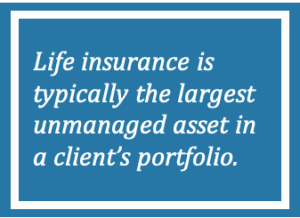The 2-Minute Rule for Pacific Prime
The 2-Minute Rule for Pacific Prime
Blog Article
The Only Guide to Pacific Prime
Table of ContentsThe Facts About Pacific Prime RevealedAn Unbiased View of Pacific PrimeThe Greatest Guide To Pacific PrimeIndicators on Pacific Prime You Need To KnowIndicators on Pacific Prime You Need To Know
:max_bytes(150000):strip_icc()/basics-to-help-you-understand-how-insurance-works-4783595_final-9cf74d5b66d14f88a21ab29ddb290e2d.png)
This is since the information were accumulated for a duration of strong economic performance. Of the estimated 42 million individuals that were uninsured, almost concerning 420,000 (regarding 1 percent) were under 65 years of age, the age at which most Americans come to be qualified for Medicare; 32 million were adults between ages 18 and 65, around 19 percent of all adults in this age team; and 10 million were kids under 18 years old, about 13.9 percent of all children (Mills, 2000).
These quotes of the number of individuals uninsured are generated from the yearly March Supplement to the Existing Population Survey (CPS), performed by the Census Bureau. Unless otherwise kept in mind, national price quotes of individuals without health insurance and percentages of the population with various sort of insurance coverage are based on the CPS, one of the most extensively used source of quotes of insurance coverage and uninsurance prices.
Not known Incorrect Statements About Pacific Prime

Still, the CPS is especially helpful because it generates yearly quotes fairly rapidly, reporting the previous year's insurance protection approximates each September, and since it is the basis for a constant set of price quotes for greater than two decades, enabling for analysis of fads in insurance coverage in time. For these reasons, along with the substantial use of the CPS in various other research studies of insurance protection that exist in this record, we depend on CPS quotes, with limitations kept in mind.

The estimate of the number of without insurance individuals broadens when a population's insurance coverage standing is tracked for a number of years. Over a three-year duration starting early in 1993, 72 million people, 29 percent of the U.S. https://linktr.ee/pacificpr1me. population, lacked protection for at the very least one month. Within a solitary year (1994 ), 53 million people experienced at the very least a month without protection (Bennefield, 1998a)
Six out of every 10 uninsured adults are themselves used. Although functioning does boost the chance that and one's family participants will have insurance, it is not a warranty. Also members of family members with 2 permanent breadwinner have practically a one-in-ten possibility of being uninsured (9.1 percent uninsured rate) (Hoffman and Pohl, 2000).
Pacific Prime Things To Know Before You Get This
New immigrants make up a substantial proportion of individuals without health insurance coverage. One analysis has associated a considerable section of the recent growth in the dimension of the U.S. uninsured populace to immigrants that showed up in the nation in between 1994 and 1998 (Camarota and Edwards, 2000). Current immigrants (those who pertained to the United States within the past 4 years) do have a high price of being without insurance (46 percent), but they and their children represent simply 6 percent of those without insurance policy nationally (Holahan et al., 2001).
The connection in between medical insurance and accessibility to care is well developed, as recorded later in this chapter. The connection between health insurance and wellness results is neither direct nor simple, an extensive professional and wellness services research literature links health insurance policy protection to improved accessibility to care, much better quality, and boosted personal and populace health and wellness status.
Levels of evaluation for analyzing the results of uninsurance. It focuses particularly on those without any kind of health and wellness insurance policy for any length of time.
Get This Report on Pacific Prime
The troubles encountered by the underinsured remain in some areas comparable to those encountered by the without insurance, although they are normally much less serious. global health insurance. Uninsurance and underinsurance, nonetheless, entail clearly various plan problems, and the methods for resolving them may differ. Throughout this study and the 5 records to comply with, the main emphasis gets on persons with no medical insurance and hence no aid in spending for health and wellness care past what is offered through charity and safeguard establishments
Medical insurance is an effective variable influencing receipt of treatment due to the fact that both individuals and physicians react to the visite site out-of-pocket cost of services - https://pastebin.com/u/pacificpr1me. Health insurance policy, nevertheless, is neither needed neither sufficient to get to clinical solutions. Nonetheless, the independent and direct effect of medical insurance coverage on accessibility to health and wellness solutions is well developed.
Others will certainly get the wellness treatment they require even without medical insurance, by paying for it expense or seeking it from service providers who provide treatment free or at very subsidized rates. For still others, wellness insurance coverage alone does not guarantee receipt of care because of various other nonfinancial barriers, such as an absence of health and wellness treatment providers in their community, restricted access to transport, illiteracy, or etymological and cultural distinctions.
Excitement About Pacific Prime
Formal research about uninsured populations in the United States dates to the late 1920s and early 1930s when the Committee on the Expense of Medical Treatment generated a series of reports regarding financing doctor workplace gos to and hospitalizations. This problem ended up being salient as the numbers of medically indigent climbed throughout the Great Clinical depression.
Report this page